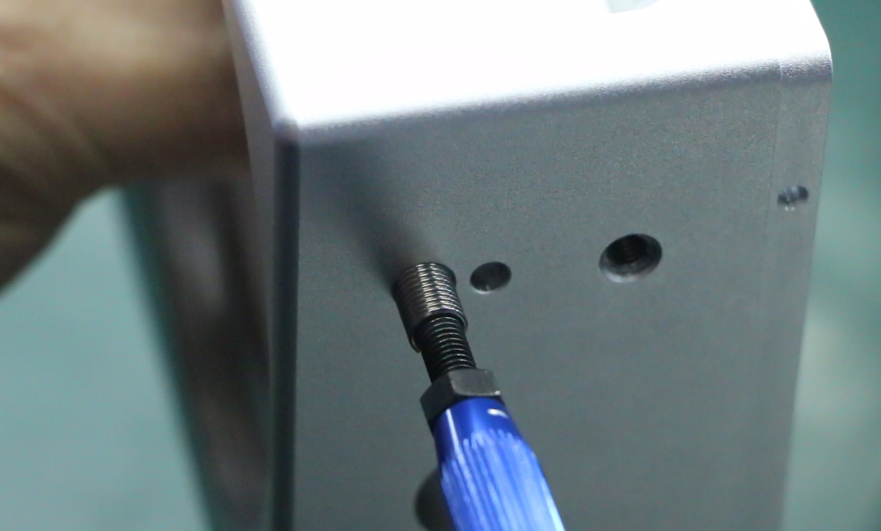15 years one-stop China custom CNC machining parts factory

Hey there I’m VMT Sam!
With 25 years of CNC machining experience we are committed to helping clients overcome 10000 complex part-processing challenges all to contribute to a better life through intelligent manufacturing. Contact us now
 173 |
Published by VMT at Dec 09 2021
173 |
Published by VMT at Dec 09 2021
The tap is one of the standard tools for CNC machining of cylindrical and conical internal threads of parts. Its structure is simple and easy to use, so it has a wide range of applications. The basic profile of the tap is a screw with a groove in the longitudinal direction to form the cutting edge and Chip flute.
What is the tapping process?
In the manufacturing process of CNC machined parts, tapping is the process of cutting threads in holes. Taps are required to drill and chamfer at the end to thread the screws or bolts into the holes of CNC machined parts. Tapping is an efficient, efficient, economical, and easy method for CNC machining of threads. Especially for small threads, it can also produce threads on nuts.
A tap is a tool used for tapping. It is wound in a hole and cuts on the thread. There are many types of tapping tools, choose the right tap according to the type of hole you want to thread. Faucets can be divided into hand faucets and power faucets. Hand faucets are the most common type of faucet, including taper taps, bottom taps, and plug taps. Power taps are the type that should be selected for CNC applications or manual CNC machining, including spiral tip taps (gun nose or bull nose taps), spiral groove taps (gun nose taps), forming or rolling taps, etc.
Taper tap
The taper tap has a considerable amount of taper to help it slowly enter the cutting thread. Usually, the first 8 to 10 threads are tapered. The taper tap is the most common type of tap, what is typical, you will be in a faucet and module.
Bottom tip
The faucet at the bottom has almost no taper at the end, because it is designed to extend all the threads all the way to its bottom. Only 1 to 1.5 threads will be tapered.
The bottom tap is a useful blind threaded hole. It hopes to use tapered taps to thread most of the holes first, and then use the bottom taper to complete the bottom of the hole.

Tip
The plug taps are between the bottom and the taper because they have 3-5 thread tapers, which are more than a bottom tap and smaller than a taper tap.
Unfortunately, the terminology is not always consistent. Some suppliers of CNC machined parts call these "second taps" and refer to the bottom taps as plug taps. Check it out and see what you got and what you used.
Intermittent tap
These thread taps only have one tooth for each other thread. The idea is to provide improved chip extraction. Pulling out each tooth helps to break the chip, but also provides more space for the escape of the chip, and also provides more space for the entry and work of lubricant.
Forming or rolling taps (thread forming taps)
The thread forming tap does not cut the thread at all. On the contrary, they are cold. Threads made in this way are often referred to as "rolling" threads.
In the process of CNC machining parts, the metal is pushed away and compressed into position instead of being cut. There is no chip to remove. Therefore, the taps themselves are less likely to break, and the threads they make are stronger. If your application allows the use of forms, for these reasons, they are usually the best choice.
Form faucets do require different feeds and speeds, and they require a different starting hole size, so pay attention to this before using it.
Although many people think that they are only suitable for soft materials such as aluminum, they can actually be used on materials with a hardness of up to 36 hc, about 340 bhn. This covers a surprisingly wide range of materials, including many steels.
I almost always choose a form of tap instead of cutting from the existing type of tap, if the material of the CNC machined part is not too difficult to form a thread.
Ready To Start Your Next Project?
Get Instant Quote

Request a Free Quote
Send us a message if you have any questions or request a quote. We will get back to you ASAP!